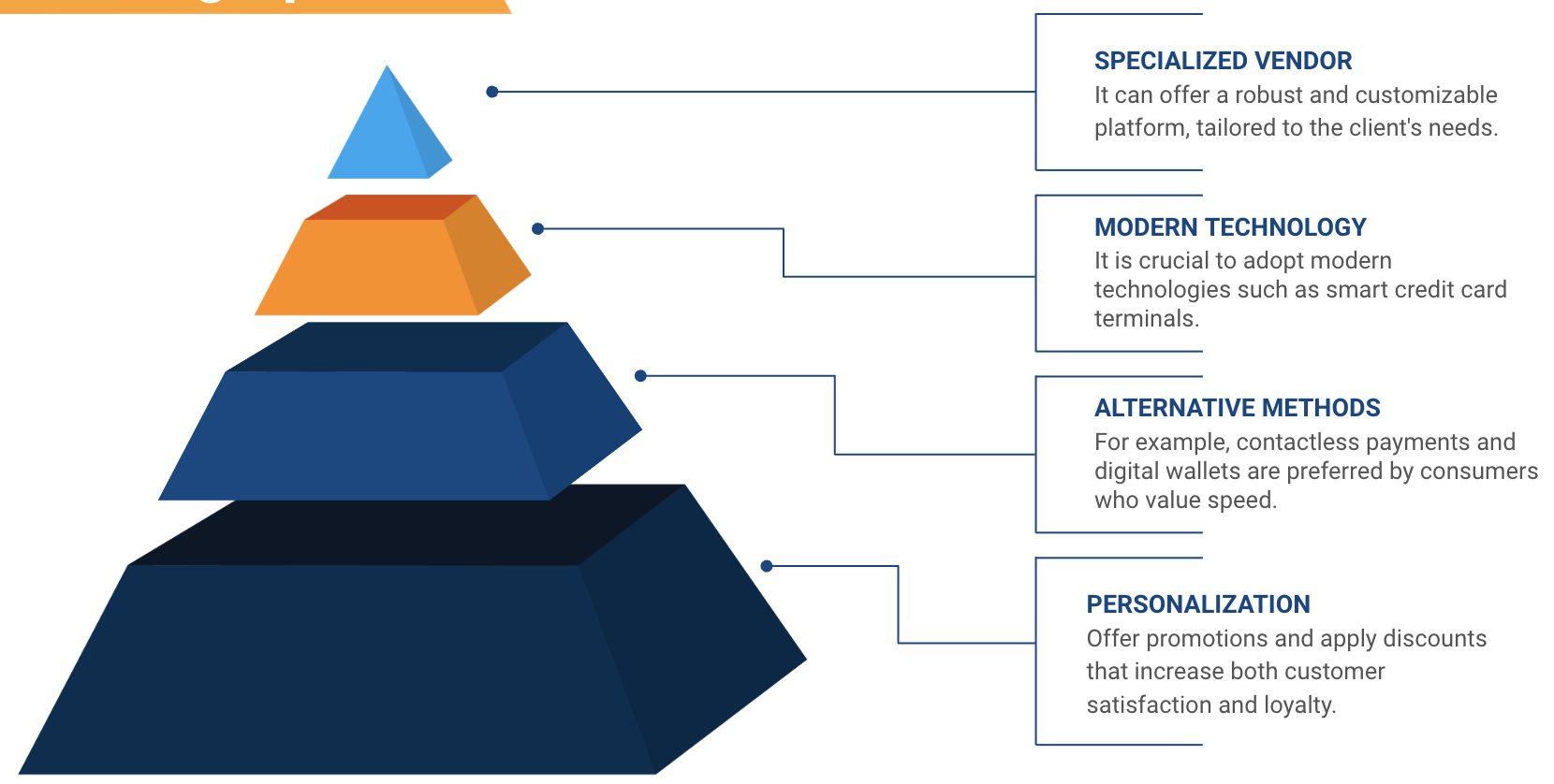
How to achieve customer-centric payment solutions with a banking software provider
November 13, 2024
Table of contents
Quick Access

Customer-centric payment solutions represent an evolution in the way businesses process transactions and manage their consumers’ expectations. Rather than following traditional payment models that often prioritize merchant convenience, these solutions put the emphasis on customer preferences, convenience, and needs.
In today’s world where customer experience (CX) is a key driver, adopting customer-centric payment solutions is essential for businesses. In fact, more than half of consumers say they would abandon a brand after just one bad experience, and three-quarters would do so after multiple bad experiences, according to a Zendesk study.
Importance of Customer-Centric Payment Solutions
Modern consumers expect payment options that fit their lifestyles and financial needs. It is no longer enough to offer cash or credit and debit cards. Customers want to pay quickly, securely and conveniently, using methods such as contactless payments, digital wallets or even smart watches. In addition, it is increasingly common for consumers to prefer to make purchases online or order online and pick it up in-store.
According to Christian Hansen, Corporate Vice President and Director of Merchant Services at Northwest Bank, “Businesses must offer more than just cash and physical card payments; they must incorporate options such as contactless payments, digital wallets and smart devices” to meet the demands of today’s consumers.
Adopting digital payments allows them to streamline payments, improve cash flow and reduce reliance on physical checks. This strengthens their relationship with customers and facilitates discounts for early payments.
Benefits of adopting a customer-centric payment solution
Implementing customer-first payment solutions not only improves the user experience, but also offers several strategic advantages for businesses:
Improved conversion rate: Offering a wide range of payment methods can reduce cart abandonment by up to 25%, as it allows consumers to choose the option that is most convenient for them, as highlighted by The Paypers portal.
Increased customer satisfaction: Personalization in payment methods, such as the possibility of saving preferences and integration with loyalty programs, increases customer satisfaction and encourages repeat purchases.
Expansion in global markets: Compatibility with diverse payment methods and currencies facilitates international expansion, especially in sectors such as e-commerce and tourism.
Increased flexibility and cash flow: Options such as installment payments or “Buy Now, Pay Later” (BNPL) provide the customer with greater control while allowing companies to capture higher-value transactions.
Valuable data-driven personalization: Customer-centric payment systems generate crucial insights into preferences and purchasing habits, enabling more precise and effective marketing and sales strategies.

How to achieve a customer-centric payment solution
To implement a customer-centric payment solution, businesses can follow a number of strategies that help them meet the expectations of their users:
Choosing a specialized banking software provider
A banking software provider with experience in developing banking software can offer a robust and customizable platform. These solutions allow you to accept multiple payment methods, manage rewards, and store customer preferences securely.
In addition, a specialized provider ensures that businesses comply with current security and privacy regulations, such as PSD2 in Europe, which has fostered innovation in payment services by facilitating open banking.
Incorporating Modern Payment Technologies
To adapt to today's payment preferences, it is crucial to adopt cutting-edge technologies such as smart credit card terminals. These devices not only process payments, but also allow for the implementation of loyalty programs, promotions, and contactless payment options.
They allow for sending electronic receipts and capturing contact information, thus improving the customer experience and encouraging retention.

Adapting to alternative payment methods
Companies should consider alternative payment methods that appeal to different customer segments. For example, contactless payments and digital wallets are highly preferred by young consumers who value speed and convenience in their transactions.
In the B2B arena, allowing bill payment with credit cards makes the process easier for customers and strengthens companies’ cash flow, helping to improve customer relationships.
Personalization and data analysis
Modern payment methods make it easy to collect key data on customer behavior during the purchase. By analyzing this information, companies can detect preference patterns and adjust their marketing strategies to offer a more personalized experience. In addition, this allows them to run targeted campaigns, offer promotions, and apply discounts that increase both customer satisfaction and loyalty.

Additional benefits for the business and its competitiveness
In addition to improving the customer experience, customer-centric payment solutions also offer direct benefits in terms of competitiveness. The increasing variety of digital payment methods allows companies to adapt to an ever-changing market and regulations that encourage security and transparency.
This customer-centric approach also aligns with the shift towards a digital economy, where companies that prioritize convenience and innovation in payments manage to differentiate themselves and attract a wider audience.
The implementation of customer-centric payment solutions, through a banking software provider and the development of specialized banking software, becomes a key competitive advantage. This approach not only increases customer conversion and retention, but also facilitates global expansion and strengthens the business's cash flow.
We recommend you this video
Related Blogs
.jpg)
Costs of developing a web portal

Tools for developing a web portal
.jpg)
Steps to develop a real estate web portal

Aspects to consider for the development of an insurance web portal
.jpg)
Steps to develop a web portal

